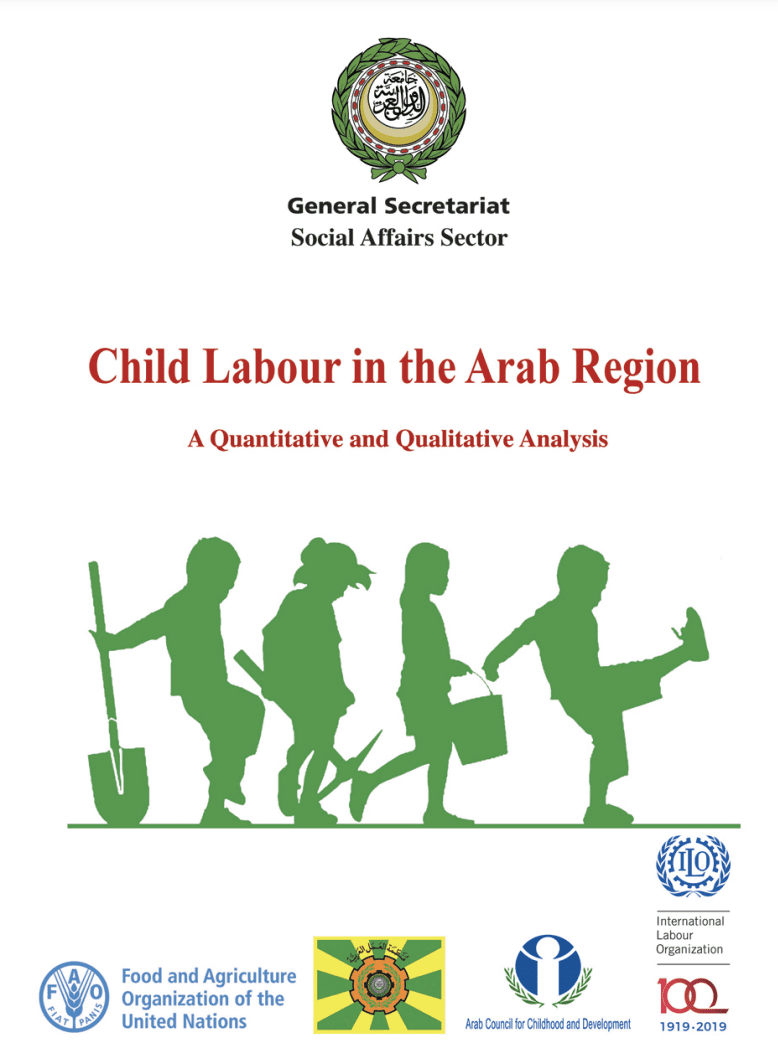
Child Labour in the Arab Region
Child labour has long been a feature of economic life in the Arab region, particularly in agriculture, small traditional craft shops, and informal industries such as garment and carpet making, as well as some construction-related activities. Children have worked irrespective of times of conflict, political unrest or economic shocks. However, over the past ten years, during which the region has witnessed high levels of armed conflict resulting in the mass displacement of populations – both within and between countries – the situation has certainly worsened.
Children, society’s most vulnerable members, have been particularly affected. They have been increasingly drawn into the worst forms of child labour and face serious and worrying exploitation, abuse and violation of their rights. These forms include the kinds of hazardous work found in agriculture, services, and industry, as well as the multiple dangers associated with working on the streets. The region has witnessed an alarming rise in the direct and indirect use of children in illicit activities, such as prostitution, and in armed conflicts – often under forced or bonded labour conditions.
It is important to note that child labour has already received significant attention in the region in that governments have endorsed relevant international and regional treaties and Conventions, and national strategies and action plans have been developed. However, many warning signs suggest that the region’s progress towards eliminating child labour – especially its worst forms – is at risk. This is especially true in the midst of continuing political and social instabilities.
Therefore, there is an urgent and immediate need to safeguard children in the Arab region, whether their serious exploitation is a result of pure economic issues or in combination with conflict and displacement. Arab countries need to realize that child labour poses immediate and future challenges not only to children themselves, but also to their nations and communities, as well as the broader economy. It is now urgent to address both the root causes and repercussions of child labour, and to ultimately eliminate it, especially in its worst forms.
Reliable and up-to-date information on the situation of children’s work and schooling is needed to guide the development and implementation of such measures. To this end, a major recommendation of the 20th Session of the Arab Childhood Committee (ACC) of November 2014 called on the League of Arab States (LAS), in cooperation with the Arab Council for Childhood and Development (ACCD) and stakeholders, to conduct a study on the size and profile of child labour in the Arab region.
The result is the study presented here, which details the main profile and trends of child labour witnessed over the past 10 years, within the context of the prevailing regional situation. Researchers faced many challenges while conducting this study, specifically a shortage of available data and statistics on child labour in the Arab region. This was especially the case with countries experiencing crises. Nonetheless, the study compiles the most up-to-date relevant data, especially of a qualitative nature.
As a follow-up measure, LAS member States are encouraged to step up data collection on children’s employment and to develop their own National Action Plans to combat the worst forms of child labour. This should set the stage for the development of a regional strategy that addresses this unacceptable humanitarian problem and programmes designed to ensure the rights of children and safeguard their future, as our children are also our future.
